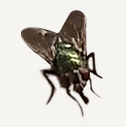Abstract
Historically, scientists and physicians have taken a corticocentric view of consciousness, emphasizing the need for a cortex in producing the conscious experience. The preserved consciousness observed in hydranencephalic children and decorticated rats suggests that some form of consciousness may be produced by a subcortical network. The brainstem, a phylogenetically conserved brain system, could serve as the major integrative network to produce this form of consciousness—referred to as ‘affective consciousness’, the evolutionary antecedent to the reflective consciousness allowing humans to reflect on experiences. The functional integration of the brainstem with the amygdala, motor network, and other subcortical structures provides the architecture necessary to support an affective state of consciousness by which instinctual-emotional goal-directed behavior is produced. This subcortical system operates by what Merker (2007) calls the selection triangle—an interface between bodily actions (action selection), the world (target selection), and personal motivation—thus producing action through integration. Accordingly, a form of consciousness may persist in the absence of the cortex, such as that observed in the persistent vegetative state (PVS). As such, it is helpful to distinguish between affective and reflective consciousness, inasmuch as this distinction would have ethical implications in treatment of those with disorders of consciousness.
Recommended Citation
Kawkabani, Shadia and Kaut, Kevin P.
(2024)
"The Brainstem as a Conserved System for Consciousness: Integrating Phylogeny, Neurology, and Psychology,"
Journal of Neuropsychology and Behavioral Processes: Vol. 1, Article 3.
Available at:
https://ideaexchange.uakron.edu/jnbp/vol1/iss1/3


